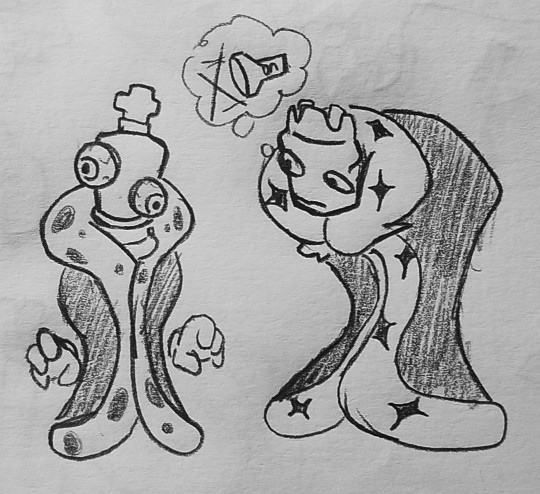#heterogeneity
Link
The Benefits of Diversity in the Workplace: Statistics and Insights Diversity in the workplace is more than just a buzzword; it is a crucial aspect of building a successful and inclusive organization. In today's globalized world, businesses are recognizing the immense benefits that come with embracing diversity. In this article, we will explore the statistics and insights that highlight the advantages of diversity in the workplace. Improved Problem Solving and Innovation Research consistently shows that diverse teams outperform homogeneous ones when it comes to problem-solving and innovation. A study conducted by McKinsey & Company revealed that companies with diverse executive teams were 33% more likely to achieve above-average profitability compared to their industry counterparts. This statistic alone emphasizes the positive impact of diversity on a company's bottom line. Enhanced Creativity and Different Perspectives When individuals from different backgrounds, cultures, and experiences come together, it creates a melting pot of ideas and perspectives. This diversity of thought fuels creativity and innovation within an organization. According to a survey conducted by Forbes, 85% of respondents agreed that diversity is crucial for fostering innovation in the workplace. Increased Employee Engagement and Retention Employees who feel valued and included are more likely to be engaged and committed to their work. A study by Deloitte found that inclusive organizations are twice as likely to meet or exceed financial targets, three times as likely to be high-performing, and six times more likely to be innovative. These statistics highlight the importance of creating an inclusive work environment that embraces diversity. Broader Talent Pool and Recruitment Companies that prioritize diversity in their workforce have a competitive advantage when it comes to attracting top talent. A diverse and inclusive workplace appeals to a broader range of candidates, resulting in a larger talent pool to choose from. According to Glassdoor, 67% of job seekers consider diversity an important factor when evaluating potential employers. Improved Decision Making Diverse teams bring together individuals with different skills, perspectives, and experiences. This diversity of viewpoints leads to more robust and well-rounded decision-making processes. A study published in the Harvard Business Review found that diverse teams make better decisions 87% of the time compared to individuals working alone. Enhanced Company Reputation Companies that prioritize diversity and inclusion not only benefit internally but also enjoy a positive reputation externally. A strong commitment to diversity can attract customers who value inclusivity. According to a survey by Accenture, 42% of consumers would switch their brand choices to support a company that is committed to diversity and inclusion. [caption id="attachment_80526" align="aligncenter" width="768"] benefits of diversity in the workplace statistics[/caption] The statistics and insights presented in this article demonstrate the tangible benefits of diversity in the workplace. From improved problem-solving and innovation to enhanced employee engagement and broader talent pools, diversity plays a crucial role in the success of organizations. Embracing diversity is not only the right thing to do but also a strategic business decision that can lead to long-term growth and prosperity. Frequently Asked Questions - Benefits of Diversity in the Workplace Statistics 1. Why is diversity important in the workplace? Diversity in the workplace brings together people with different backgrounds, experiences, and perspectives, leading to increased creativity, innovation, and problem-solving abilities. 2. How does diversity contribute to employee engagement? A diverse workforce fosters a sense of belonging and inclusivity, which improves employee engagement, morale, and overall job satisfaction. 3. What are the benefits of diversity in decision-making processes? Diverse teams make better decisions by considering a wider range of perspectives, leading to more effective problem-solving and improved outcomes. 4. How does diversity impact business performance? Research shows that companies with diverse workforces tend to outperform their competitors, demonstrating higher financial returns and increased innovation. 5. Can diversity in the workplace enhance customer satisfaction? Having a diverse workforce allows businesses to better understand and cater to the needs of a diverse customer base, leading to improved customer satisfaction and loyalty. 6. What role does diversity play in attracting top talent? Companies that prioritize diversity and inclusion are more likely to attract and retain top talent, as individuals are drawn to organizations that value and promote diversity. 7. Does diversity in the workplace improve problem-solving abilities? Yes, diverse teams bring different perspectives and approaches to problem-solving, leading to more creative and effective solutions. 8. How can diversity in the workplace enhance creativity and innovation? When individuals with diverse backgrounds and experiences collaborate, they bring unique ideas and insights, fostering a culture of creativity and innovation within the organization. 9. Are there any legal benefits to having a diverse workforce? Having a diverse workforce helps organizations comply with equal opportunity employment laws and regulations, reducing the risk of discrimination lawsuits. 10. How can organizations promote diversity and inclusion in the workplace? Organizations can promote diversity and inclusion by implementing inclusive hiring practices, providing diversity training, fostering an inclusive culture, and creating employee resource groups.
#assortment#contrast#difference#disparity#dissimilarity#dissimilitude#distinction#divergence#divergency#heterogeneity#inclusion#mix#multiculturalism#multiplicity#pluralism#range#variety
0 notes
Text

If you like Dungeon Meshi, why not try out Heterogeneous Linguistics?
It follows the student of a monster anthropologist tasked with learning about monster culture himself. In doing so he learns that every monster species has their own communication style and own way of overcoming their language barrier.
Like werewolves:


Slimes:


and Kraken!

Heterogeneous Linguistics covers all kinds of monsters, both humanoid and not.
Not only that, it explores the culture of the monster world, untouched by humans, where communities connected by the travelers between them have their own independent ways of living that he must learn as he travels deeper into the country.
An absolutely fascinating manga that I think takes Dungeon Meshi's "what if monsters were animals" and pushes it all the way to "what if monsters were people, even if they had nothing in common with humans".
All told alongside a little half-human half-werewolf girl, who, on account of being a child, perceives these differences as intuitive and can't explain a damn thing.
#pers#heterogeneous linguistics#i think the slimes are the living armour of this manga. just immediately fascinating phenomenon
3K notes
·
View notes
Text
Diuretics use in patients with Acute Renal Failure and Septic Shock by Dr Dale Ventour in Journal of Clinical Case Reports Medical Images and Health Sciences

ABSTRACTS
Loop diuretics should be administered in the ‘de-resuscitative’ of sepsis, this occurs after the initial resuscitative period during sepsis. The dose of diuretic should be monitored and a continuous infusion of furosemide, which is the most prescribed diuretic, should be no greater than 4mg/min.
There needs to be caution with co-administered nephrotoxic agents such as aminoglycosides, other diuretics, NSAIDS as these increase the toxicity profile. Despite the popular use of loop diuretics in critical care, loop diuretic use in sepsis has not been shown to decrease patients’ mortality.
This manuscript aims to discuss the use of diuretics in patients with septic shock exploring the evidence and consensus about the use of this therapy in critically unwell patients.
KEYWORDS: loop diuretics, septic shock, oliguria, ototoxicity, renal failure, critical care.
INTRODUCTION
Loop diuretics can be used in critical care to manipulate urine output in patients with hypoperfusion. Loop diuretics benefit the renal medulla during hypoxia by decreasing the tubular energy requirements(1, 2), which makes it a very attractive addition for patients with septic hypoperfusion. A Meta-analysis by K M Ho et al 2006 did not find in reduction in in-hospital mortality, requirement for dialysis, length of stay or number of patients remaining oliguric(3). A positive diuretic response to furosemide may indicate that the patient is in the ‘de-resuscitative’ phase of sepsis and that renal impairment is less severe. It is also appreciated that patients with non-oliguric renal failure have a lower mortality than patients with oliguric renal failure(4). The timing, duration, and dosing of diuretic therapy, plays a significant role in the morbidity associated with diuretic therapy in sepsis.
Diuretics in critical care; is used as a prophylactic measure that is, to prevent the onset of renal failure; to alleviate renal impairment in patients with established renal compromise or to convert oligo uric to non-oligo uric renal failure. There was no evidence in the meta-analysis by Ho et al 2006 that there was any benefit in the above listed uses of diuretics(3). There was great heterogeneity between groups in this analysis and most patients had existing renal impairment so that extrapolation to critical care patients with sepsis is problematic.
The goal of transitioning a septic patient from oligemic to non-oligemic renal failure is associated with a decreased mortality trend and diuretic therapy might aid patients with regard to normalizing positive fluid balances (5) but this intervention has associated risks and complications.
Diuretic therapy should be initiated not based on urine output but when the patient has transitioned from the early resuscitative phase to the “de-resuscitative” phase of septic shock. The transit point is determined clinically as the patient is no longer fluid responsive as per passive leg raises or with static/dynamic cardiac output monitoring, is less academic and inotropic support has stabilized or decreased.
Why does this matter?
There are associated side effects when initiating diuretic therapy in critically unwell patients such as ototoxicity, hypernatremia, hypotension and worsening renal function.
OTOTOXICITY
There is changes in the endolymph ionic concentration and fluid composition secondary to the inhibition of the Na-K-2Cl transporter within the stria vascularis of the inner ear(6). Aminoglycoside antibiotics potentiate furosemide ototoxicity, but noise trauma apparently does not. Methods of avoiding ototoxicity are suggested including slow continuous infusion rather than bolus injection, use of divided oral dose regimens, and the measurement of blood levels to avoid exceeding 50 mcg/ml of furosemide(6).
In heart failure patients as outlined by Salvador et al 2005(7), continuous infusions of furosemide resulted in a lower incidence of ototoxicity and fewer side effects. Continuous infusions resulted more than 30% increase in sodium excretion than bolus administration.
The ototoxicity induced by furosemide can be reversible although permanent deafness has been reported. The complication is related to both the peak serum drug concentration and the accumulated dose from continuous infusion and is aggravated with the concurrent use of aminoglycosides or Non-Steroid Anti-Inflammatory Drugs. The maximum recommended infusion dose is 4 mg/min (8).
HYPERNATREMIA
Hypernatremia as outlined by Hai-bin Ni et al 2016(9) was associated with increased mortality whether or not it was associated with diuretic use, this is a common side-effect with liberal diuretic use within the Intensive Care.
Hypernatremia as an independent predictor of mortality regardless of aetiology, speciality and across patients with different ages and co-morbidities (10-14). Risk factors include advancing age, co-existent renal impairment, associated use of nephrotoxic drugs. The phenomenon is poorly understood but correction is based on balancing renal water loss with overcorrection with isotonic solutions versus hypotonic water correction.
It necessities the use of Nasogastric water, naturetics, 5% Dextrose administration, low sodium enteral feeds and re-constituting drugs with 5% Dextrose rather than saline to correct this electrolyte imbalance. These interventions further complicates the management of the critically unwell patient, prevention is of tantamount importance.
WORSENING RENAL FUNCTION
Numerous studies have indicated that there is no benefit in the use of diuretic therapy to improve outcomes in patients with established acute renal failure in Intensive Care (15, 16). Maeder et al 2012, indicated a trend toward worsening renal function in elderly patients with chronic renal failure within a medical Intensive Care(17). His definition of chronic renal failure was >0.5 mg/dl increase in baseline creatinine over the 6 months follow up, again the findings not only supported renal failure as an independent predictor of mortality, but it was also aggravated by escalating the loop diuretic dose [17].
HOW DO WE ADMINISTER LOOP DIURETICS?
Meta-analyses support the administration of loop diuretics as continuous infusions versus boluses as there is better diuresis at a lower cumulative dose(18), this will inevitably lead to fewer side effects and more efficient fluid balance.
It has been suggested that the infusion dose be limited to 4mg/min to minimize the side effect profile as the loop diuretic has a ceiling effect around this dose [9]. It is also proposed by this author that the diuretic be administered in the ‘de-resuscitative’ phase of sepsis to manage the patient’s overall fluid balance.
The use of diuretics should be for the shortest time possible as there are considerations for electrolyte abnormalities and ototoxicity with a clear focus on serum sodium to gauge the amount of free water loss. While I am not against the administration of loop diuretics in septic patients with acute renal failure the timing of administration of the drug class with the “de-resuscitative phase of sepsis” is vitally important.
DISCUSSION
There is a paucity of evidence supporting the use of loop diuretics in septic critically unwell patients with acute renal failure leading to improved mortality(19, 20). These studies have highlighted increased risk of complications such as electrolyte disturbance without reducing the need for continuous renal replacement therapy or the duration of renal replacement.
Ototoxicity remains an underreported complication as there can be other contributing factors for altered hearing after the critical care episode. This complication will contribute to a patient’s post critical care morbidity affecting patient and patient’s family quality of life.
The is wide variation with the timing, dose, and indication for diuretic therapy in critical care. Bolus administration, low-dose continuous infusions (20) or high dose titrated to urine output or daily fluid balance are all methods used to administer diuretics. Liborio et al in his observational study of over 14,000 patients found no decreased mortality in critically ill patients with over 60% of these patient experiencing sepsis with a dose of furosemide up to 80 mg/day(21)
CONCLUSION
The indication and use of diuretics in septic patients with oliguric acute renal failure is varied and confounded by timing and effective dosage. However, there are significant complications associate with the use of diuretics in the critical care population and need serious considerations prior initiation of this therapy as there is no mortality benefit in septic patients with acute kidney injury.
Acknowledgement: No acknowledgement
For more information: https://jmedcasereportsimages.org/about-us/
For more submission : https://jmedcasereportsimages.org/
#loop diuretics#septic shock#oliguria#ototoxicity#renal failure#critical care#NSAIDS#hypoperfusion#heterogeneity#hypotonic water#Dr Dale Ventour#jcrmhs
0 notes
Text
The heterogeneous social?
image: screenshot from video, “A Bird Ballet”
I’ve argued in several places that we need to think of the social world as being radically heterogeneous (link, link, link). There are multiple processes, things, structures, and temporalities at work, and what we perceive at a moment in time in the social world is a complex composite of these various things. The social world is not a unified system;…

View On WordPress
0 notes
Text
The Heterogeneous Museum of Nature and People
This museum has the Sun, Moon, Sea and Forest rooms. In each room, you can enjoy an experience based on a concept.
83 notes
·
View notes
Text
Who wants more slop








Enjoy these rigid bozos
#art#traditional art#personal design#the amazing digital circus#tadc au#tadc gangle#tadc jax#tadc kinger#tadc pomni#tadc zooble#tadc ragatha#basically opposites au#the horrendous heterogeneous headquarters.#tadc caine
43 notes
·
View notes
Text

#Heterogeneous Linguistics ~Introduction to Heterogeneous Linguistics~#Heterogenia Linguistico ~Ishuzoku Gengogaku Nyuumon~#heterogeneous linguistics#heterogenia linguistico
84 notes
·
View notes
Text
OKAY Now I'm gonna tell you about the manga I read last night and I'm obsessed with:

It's called Heterogeneous Linguistics. It's about a human linguist who travels a fantasy world to learn about the language and culture of monsters, and they aren't your regular "girls with animal ears" monsters (well, the little girl is half-human, but that is very important for the story later), every single one has a different way of communicating based on their anatomy and mentality, with quirks based on biology, culture and ways of thinking. It has lovingly crafted worldbuilding, exceptionally smart writing, and cute moments. It challenges you constantly as you actually struggle to understand the world and the people who are shown to you with the main character, and it's always a pleasant, intriguing experience. There's also a very interesting backstory that slowly reveals itself between the relationship of "monsters" and humans. And the quirks of a linguistic manga translated from Japanese to other languages brings a whole meta layer to it.
It's so good it has permanently raised my bar on what I expect from worldbuilding from now onwards. Go check it out.
It's available in Mangadex in English, Spanish, and Italian.
If you are not convinced yet, here's a couple panels that had me rolling in the floor last night:

AWOO! IF YOU KNOW THAT YOU'RE ALL SET!
(spoilers: knowing AWOO! is not enough)
#cosas mias#Heterogeneous Linguistics#I'm going to post a lot about it#the protagonist is like if Laius Dungeomeshi was less unhinged and an anthropologist#I want to discuss it so badly because there's a HUGE thing in the latest issues that I have strong opinions on#manga#linguistics#anthropology#worldbuilding#awoo
667 notes
·
View notes
Text

Heterogenia Linguistico: Ishuzoku Gengogaku Nyuumon by Salt Seno
28 notes
·
View notes
Text

81 notes
·
View notes
Link
Benefits of Diversity in the Workforce Diversity in the workforce has become an increasingly important topic in today's globalized society. Companies are recognizing the numerous benefits that a diverse workforce can bring, not only in terms of innovation and creativity but also in fostering a more inclusive and dynamic work environment. In this article, we will explore the advantages of diversity in the workforce and how it can positively impact businesses. Enhanced Creativity and Innovation A diverse workforce brings together individuals from different backgrounds, cultures, and experiences. This diversity of perspectives can lead to enhanced creativity and innovation within an organization. When people with different viewpoints collaborate, they can generate unique ideas and solutions that may not have been possible with a homogenous workforce. By encouraging diversity, companies can tap into a wealth of creativity and drive innovation forward. Improved Problem Solving When faced with complex challenges, diverse teams often excel in problem-solving. The varied perspectives and approaches brought by a diverse workforce can lead to more comprehensive and effective solutions. Different individuals may have different ways of analyzing problems, which can result in a broader range of potential solutions. This diversity of thought can help companies overcome obstacles and adapt to changing market conditions more efficiently. Increased Productivity Studies have shown that diverse teams tend to be more productive. When individuals from different backgrounds work together, they bring unique skills, experiences, and knowledge to the table. This diversity of expertise can lead to a more efficient and productive work environment. Employees feel valued and empowered, which boosts their motivation and commitment to achieving organizational goals. Ultimately, increased productivity can positively impact a company's bottom line. Enhanced Decision Making Diversity in the workforce can also lead to better decision-making processes. When a team consists of individuals with different backgrounds and perspectives, they are more likely to consider a wider range of options and potential outcomes. This can result in more thoughtful and well-rounded decisions. By avoiding groupthink and encouraging diverse viewpoints, companies can make more informed choices that consider various risks and opportunities. Increased Employee Engagement and Retention A diverse workforce fosters a sense of belonging and inclusivity, which can significantly impact employee engagement and retention. When employees feel valued and respected for their unique contributions, they are more likely to be engaged and committed to their work. This, in turn, reduces turnover rates and increases employee retention. By embracing diversity, companies can create a positive work culture that attracts and retains top talent. Expanding Customer Base A diverse workforce can help companies better understand and connect with their diverse customer base. When employees come from different backgrounds, they bring insights into various cultures, preferences, and needs. This understanding allows companies to tailor their products or services to better meet the demands of a diverse market. By embracing diversity, businesses can gain a competitive edge and expand their customer base. [caption id="attachment_80411" align="aligncenter" width="1200"] benefits of diversity in the workforce[/caption] In conclusion, the benefits of diversity in the workforce are numerous and impactful. From fostering creativity and innovation to improving problem-solving and decision-making, a diverse workforce can drive a company's success. By embracing diversity, companies can create a more inclusive and dynamic work environment that attracts top talent and connects with a diverse customer base. Diversity is not only a moral imperative but also a strategic advantage for businesses in today's globalized world. Frequently Asked Questions 1. Why is diversity important in the workforce? Diversity in the workforce brings together individuals with different backgrounds, experiences, and perspectives, leading to enhanced creativity, innovation, and problem-solving abilities. 2. How does diversity benefit a company? Diversity fosters a more inclusive and welcoming work environment, improves employee morale and engagement, increases productivity, and helps companies better understand and cater to diverse customer needs. 3. Can diversity in the workforce improve decision-making? Absolutely! When diverse perspectives are considered in decision-making processes, it leads to better-informed and well-rounded decisions, reducing the risk of biases and groupthink. 4. Does diversity in the workforce contribute to increased creativity? Yes, diverse teams bring together a wide range of ideas, experiences, and knowledge, encouraging out-of-the-box thinking and sparking creative solutions to challenges. 5. How does diversity support innovation? Diversity fosters a culture of innovation by promoting the exchange of different ideas, perspectives, and approaches. It encourages employees to challenge the status quo and explore new possibilities. 6. Can diversity in the workforce improve problem-solving abilities? Yes, diverse teams can offer a broader range of insights and approaches when tackling complex problems. This diversity of thought leads to more effective problem-solving and better outcomes. 7. How does diversity in the workforce contribute to employee satisfaction? When employees feel valued and included, regardless of their backgrounds, they are more likely to be satisfied with their work, leading to higher retention rates and increased loyalty to the company. 8. Does diversity in the workforce enhance cultural competence? Absolutely! Working alongside individuals from diverse backgrounds helps employees develop cultural competence, understanding, and respect for different customs, traditions, and perspectives. 9. Can diversity in the workforce improve customer relations? Yes, a diverse workforce can better understand and connect with diverse customer bases, leading to improved customer relations, increased customer satisfaction, and ultimately, business growth. 10. How does diversity in the workforce contribute to a positive company image? Companies that prioritize diversity and inclusion tend to be viewed more positively by the public, attracting top talent, fostering a reputation for fairness, and gaining a competitive edge in the market.
#better_customer_understanding#broader_skill_set#creativity#cultural_richness#different_perspectives#enhanced_decision_making#equal_opportunities#equality#heterogeneity#higher_employee_engagement#improved_problem_solving#improved_reputation#inclusivity#increased_employee_satisfaction#increased_productivity#innovation#multiculturalism#reduced_turnover#variety
0 notes
Photo








異種 / 歌愛ユキ・GUMI・鳴花ヒメ
#eyestrain#body horror#Heterogeneous#ishu#geso#rinri#yuiru#sei#gumi#Kaai Yuki#meika hime#gif#vocaloid#japanese vocaloid
6 notes
·
View notes
Text
I've been listening to the entire mitski discography on repeat for the past 35 days and now I need it injected in my veins please send help
4 notes
·
View notes
Text
i wanna plant species in my garden so that there are flowers almost all year around. this will attract all kinds of bugs that will pollinate my vegetables and reduce pests
#also i want to increase the shade to make the terrain conditions more heterogeneous and protect the crops from the sun a little bit#and also im going to start to combine different crops to reduce the amount of space#finally i wanna stop plowing the land and transition to regenerative methods to create new soil#(mainly because its too much work and also ive seen compost rich soil and i wanna switch and never come back)
4 notes
·
View notes
Text
Getting better @ making mango sticky rice 🥭
#pretty simple recipe just rly a question of proportions & heterogeneity#getting the sticky rice right takes a try or two#rly just steaming - i use a steaming basket for a rice cooker#then wrap is mueslin (or however its spelled) & leave some room around the sides so the steam isnt trapped
29 notes
·
View notes
Text
*cough* I made a fucking AU since the new episode came out today.

I decided to move each letter of their names to the next letter in the alphabet and made their personalities opposite of the originals







#art#traditional art#personal design#the amazing digital circus#tadc#tadc au#the horrendous heterogeneous headquarters.#basically opposites au
11 notes
·
View notes